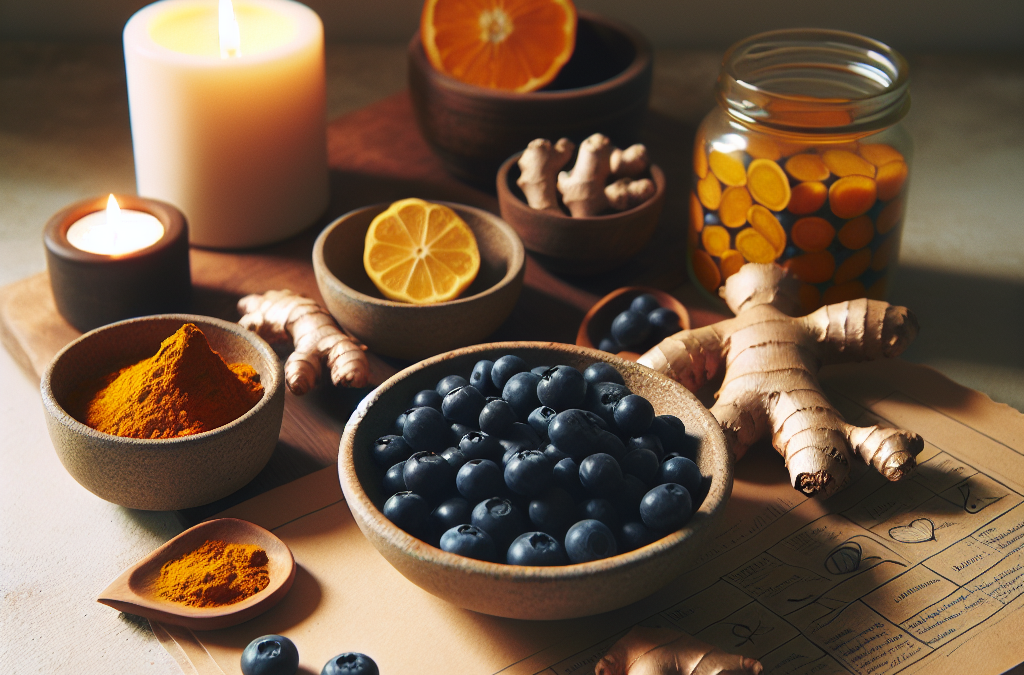Adopting an Anti-Inflammatory Diet
Understanding What Foods to Include
First off, let me tell you, diving into an anti-inflammatory diet has been a game changer for me. I started including more whole, nutrient-dense foods in my meals. Think colorful fruits and veggies, whole grains, lean proteins, and healthy fats. Like, seriously, adding blueberries and spinach to my smoothies made me feel like a superhuman!
Now, there’s no shortage of delicious options. I’ve started whipping up dishes that are rich in antioxidants and omega-3 fatty acids. Salmon, for example, became my best friend. Not only does it taste amazing, but the benefits are off the charts when it comes to fighting inflammation. Don’t underestimate the power of some good old-fashioned olive oil, either—it’s liquid gold!
Also, don’t forget about spices! Turmeric and ginger are pretty much superheroes when it comes to combating inflammation. I sprinkle turmeric in my soups and blends without hesitation. Just a little bit can elevate your dishes while also working wonders for your body. Trust me; I can feel the difference!
Staying Active with Regular Exercise
Finding Activities You Enjoy
Now, onto another fascinating area: exercise. I used to think that working out was just about lifting weights or running marathons, but oh boy, was I wrong! The key is to find activities that you genuinely enjoy. For me, that’s biking and dance classes. They not only get my heart pumping but also help me stay motivated.
You don’t have to push yourself too hard; even a brisk walk can work wonders. When I started taking short walks after meals, I noticed an immediate uplift in my mood and energy levels. Plus, it’s a fantastic way to clear your mind and reduce stress, which is equally important.
And don’t get me started on the feeling post-exercise! There’s a natural high that comes from working out, and it’s been linked to lower levels of inflammation. So whether it’s yoga, swimming, or just dancing around your living room, find what makes you feel good and stick with it!
Incorporating Stress-Reduction Techniques
Practicing Mindfulness and Meditation
Okay, let’s talk stress. We all know stress can wreak havoc on our bodies, and that includes increasing inflammation. One of the best things I did for myself was to incorporate mindfulness and meditation into my routine. It seemed a bit daunting at first, but it’s become one of my favorite parts of the day.
I usually start my mornings with a simple five-minute meditation. Focusing on my breath and being present has made me feel a lot calmer. It’s amazing how just a few minutes a day can help clear your mind and ease those pesky stress levels.
And if meditation isn’t your thing, no worries! Even deep-breathing exercises or mindfulness walks can do the trick. I often remind myself to take a deep breath when I’m feeling overwhelmed. Just a simple pause to center myself can have a huge impact on how my day goes.
Getting Quality Sleep
Creating a Restful Sleep Environment
Let’s face it—who doesn’t love a good night’s sleep? I can’t stress enough how vital quality sleep is for reducing inflammation. Over the years, I’ve learned that my environment plays a significant role in my sleep quality. I invested in blackout curtains to keep my room dark and cozy, and it made all the difference!
Get an Amazing Discount on the Best Certified Organic Whole Food Supplement!
Also, something as simple as lowering the thermostat can set the stage for better sleep. I’ve found that a cool room is perfect for snuggling up and drifting off, which definitely helps with inflammation levels when I wake up refreshed.
And hey, I make it a rule to unplug from screens at least an hour before bedtime. The blue light wasn’t doing my sleep any favors, and I could tell! Instead, I’ve swapped scrolling for reading, which definitely gets me into a sleepy groove faster.
Utilizing Natural Supplements
Consulting with Healthcare Professionals
Finally, let’s talk about natural supplements. I have to admit, I was a bit skeptical at first, but trying out things like fish oil and curcumin has been interesting. However, it’s crucial to consult with a healthcare professional before diving in. Everyone’s body is different, and what works for me might not work for you.
I found that doing a little research beforehand helped me pick the right supplements. When I chatted with my doctor about my habits, we discovered several options that could potentially fit my lifestyle seamlessly. It’s all about finding that balance.
Also, keeping track of how I felt after taking these supplements was super important. Listening to my body’s responses has guided me in determining what truly makes a difference. Just remember, supplements are no substitute for a healthy diet and lifestyle, but they can offer that extra push.




